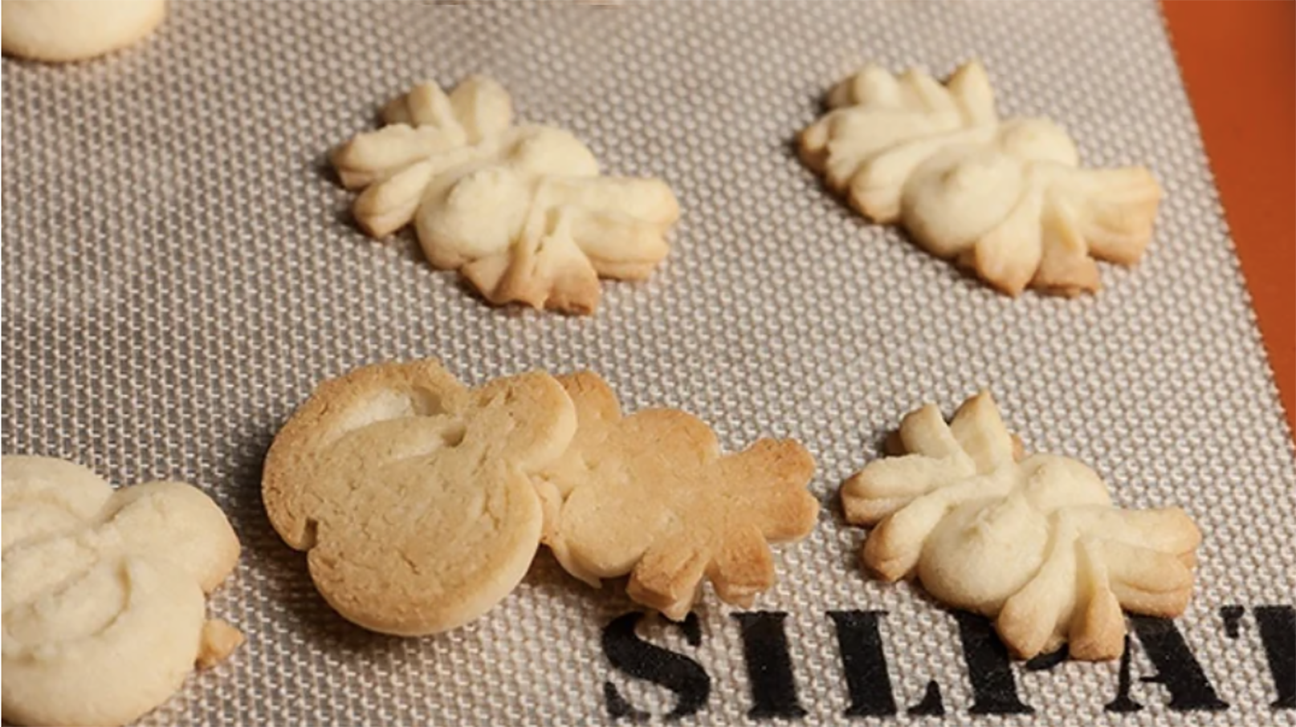Silicone mats are a boon to baking, but after time, they tend to develop a greasy layer that never wants to come off (one area where parchment paper has a definite advantage). Here’s how to clean silicone baking mats once and for all.

Pros and cons of silicone mats for baking
Silpat, the original makers of silicone baking mats (though there are now other brands available, including OXO and AmazonBasics), acknowledges that a sticky film is natural. And some cooks actually prefer their silicone mats “seasoned” in such a manner, but that does mean the mats can attract lint, crumbs, and dust during storage.
Ironic, since they are so reliably, perfectly nonstick when baking, roasting food, and cooling candy!
Storing them loosely rolled up helps with that, but they’ll still feel tacky to the touch when you use them.
How do you clean greasy silicone mats?
Home chef LaureltQ discovered one method by accident: While experimenting with making pretzels, she used lye to achieve a deep brown crust, then “put the [Silpat] sheets away without bothering to wash them (I am exceptionally lazy).” [Editor’s note: Same.]
When she washed the silicone mats off, she had “pretzel-shaped clean spots! Turns out the lye cleaned the greasy feeling (that I’ve been unable to remove otherwise) [from] the mats.” Other cooks suggest Greased Lightning might be a good alternative.
However, the Silpat care instructions warn that “Aggressive materials such as lye and very acidic detergents can damage and/or reduce the lifespan of Silpat™.”
If you’d rather use something a bit less caustic, there’s always baking soda.
Baking soda is also often used to encourage a brown pretzel, and is a well-known superstar of natural cleaning solutions, along with white vinegar.
Together or alone, they can tackle the sticky coating on your silicone mats too. Another warning from Silpat, though: They recommend you use cleaning solutions with a pH no higher than 7; white vinegar has a pH of about 2.5 and baking soda’s pH is around 9—combined, their pH varies depending on the ratio you use.
Make a paste of baking soda and a tiny bit of vinegar, or just baking soda and a little water, and use a sponge or light-to-medium-bristled scrub brush to work it in while the mat is still warm. Let it sit for at least 10 minutes, then rinse in hot water and dry. Feel for residual sticky areas and hit them with baking soda again, then let it completely dry onto the mat before rinsing off.
And Bar Keepers Friend works for everything, right?
Or just submerge your warm mat in a sink of enough hot water to cover the mat, with a few spoonfuls of vinegar or lemon juice added (Amanda Hesser/Food52-approved), let it sit for 10-15 minutes before scrubbing, and allow to dry.
If the mats are really bad and that doesn’t cut it, follow the advice of Sally’s Baking Addiction and add a grease-fighting soap to the water instead.
Hot tip: Always clean silicone mats while warm
The reason you should clean your mat while hot (no matter which solution you use), is because silicone molecules expand when heated—which is also why the mats become greasy in the first place, as they absorb oil from the things you’re baking or roasting in the hot oven. Heating them up before cleaning, then, should make it easier to remove the trapped grease. You’ll also want to use truly hot water, not just warm, so pop on your heavy duty kitchen gloves too.
Alternatively, you can simply throw the mats in the dishwasher. It may not be the best practice, but they should still last for years.

0 Commentaires